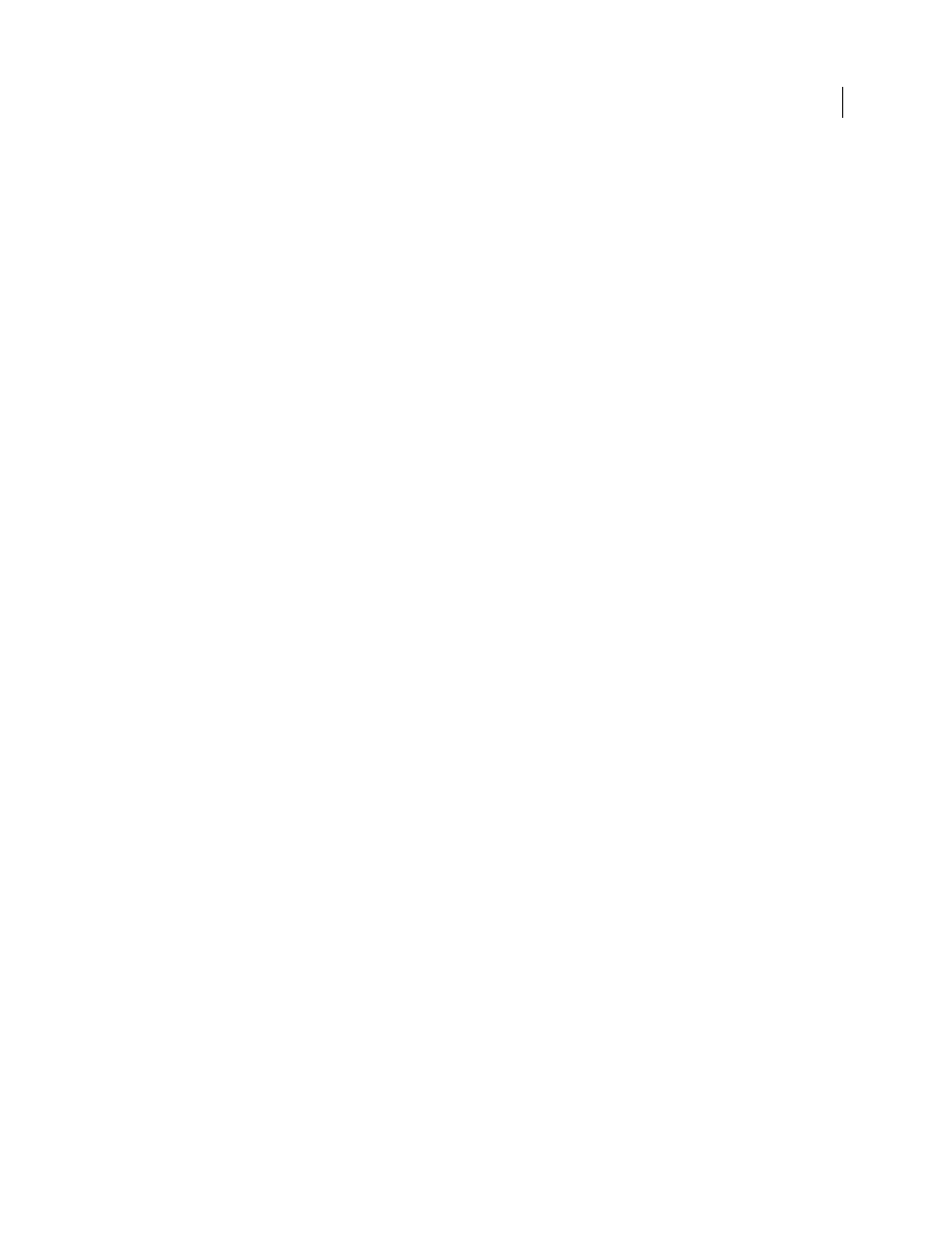Patterns, About patterns, Guidelines for constructing pattern tiles – Adobe Illustrator CS4 User Manual
Page 198

191
USING ADOBE ILLUSTRATOR CS4
Painting
Patterns
About patterns
Illustrator comes with many patterns that you can access in the Swatches panel and in the Illustrator Extras folder on
the Illustrator CD. You can customize existing patterns and design patterns from scratch with any of the Illustrator
tools. Patterns intended for filling objects (fill patterns) differ in design and tiling from patterns intended to be applied
to a path with the Brushes panel (brush patterns). For best results, use fill patterns to fill objects and brush patterns to
outline objects.
When designing patterns, it helps to understand how Adobe Illustrator tiles patterns:
•
All patterns tile from left to right from the ruler origin (by default, the bottom left of the artboard) to the opposite
side of the artwork. To adjust where all patterns in your artwork begin tiling, you can change the file’s ruler origin.
•
Fill patterns typically have only one tile.
•
Brush patterns can consist of up to five tiles—for the sides, outer corners, inner corners, and the beginning and end
of the path. The additional corner tiles enable brush patterns to flow smoothly at corners.
•
Fill patterns tile perpendicular to the x axis.
•
Brush patterns tile perpendicular to the path (with the top of the pattern tile always facing outward). Also, corner
tiles rotate 90° clockwise each time the path changes direction.
•
Fill patterns tile only the artwork within the pattern bounding box—an unfilled and unstroked (non-printing)
rectangle backmost in the artwork. For fill patterns, the bounding box acts as a mask.
•
Brush patterns tile artwork within the pattern bounding box and protruding from or grouped with it.
See also
Guidelines for constructing pattern tiles
Follow these general guidelines for constructing pattern tiles:
•
To make the pattern less complex so that it prints more rapidly, remove any unnecessary detail from the pattern
artwork, and group objects that are painted with the same color so that they are adjacent in the stacking order.
•
As you create your pattern tile, zoom in on the artwork to align elements more accurately, and then zoom out from
the artwork for the final selection.
•
The more complex the pattern, the smaller should be the selection used to create it; however, the smaller the
selection (and the pattern tile it creates), the more copies are needed to create the pattern. Thus, a 1-inch-square
tile is more efficient than a 1/4-inch-square tile. If you are creating a simple pattern, you can include multiple copies
of the object within the selection intended for the pattern tile.
•
To create simple line patterns, layer stroked lines of varying widths and colors, and place an unfilled, unstroked
bounding box behind the lines to create a pattern tile.
•
To make an organic or textural pattern appear irregular, vary the tile artwork subtly for a more realistic effect. You
can use the Roughen effect to control variations.
•
To ensure smooth tiling, close paths before defining the pattern.
•
Enlarge your artwork view and check for flaws before defining a pattern.